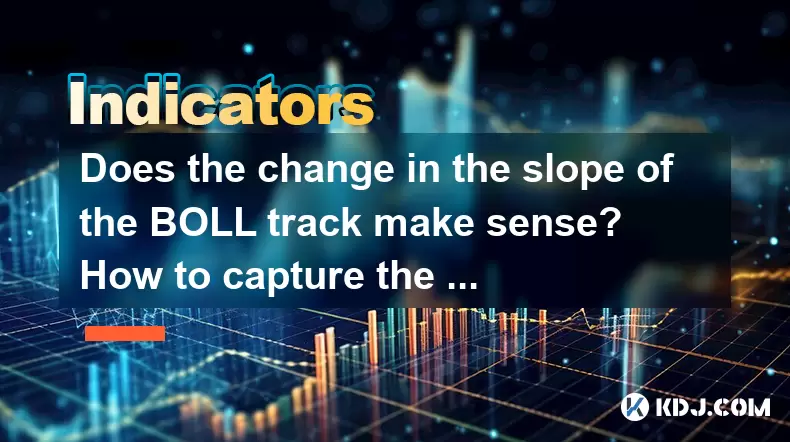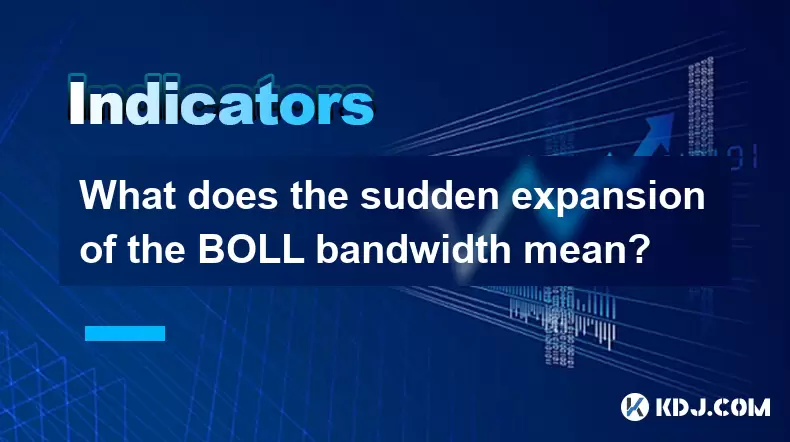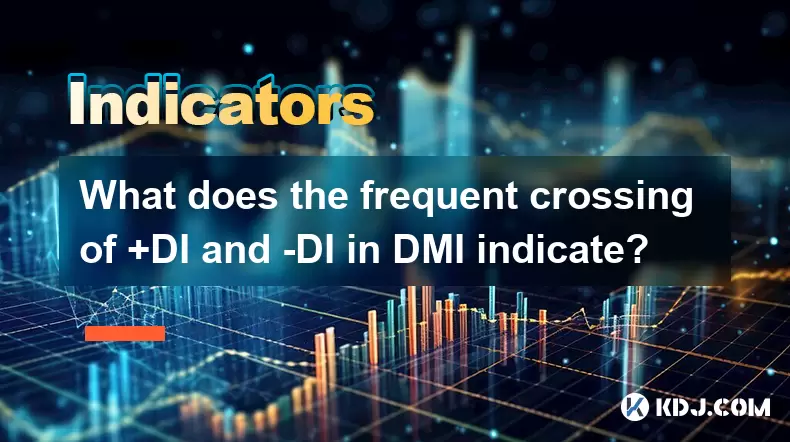-
 Bitcoin
Bitcoin $106,754.6083
1.33% -
 Ethereum
Ethereum $2,625.8249
3.80% -
 Tether USDt
Tether USDt $1.0001
-0.03% -
 XRP
XRP $2.1891
1.67% -
 BNB
BNB $654.5220
0.66% -
 Solana
Solana $156.9428
7.28% -
 USDC
USDC $0.9998
0.00% -
 Dogecoin
Dogecoin $0.1780
1.14% -
 TRON
TRON $0.2706
-0.16% -
 Cardano
Cardano $0.6470
2.77% -
 Hyperliquid
Hyperliquid $44.6467
10.24% -
 Sui
Sui $3.1128
3.86% -
 Bitcoin Cash
Bitcoin Cash $455.7646
3.00% -
 Chainlink
Chainlink $13.6858
4.08% -
 UNUS SED LEO
UNUS SED LEO $9.2682
0.21% -
 Avalanche
Avalanche $19.7433
3.79% -
 Stellar
Stellar $0.2616
1.64% -
 Toncoin
Toncoin $3.0222
2.19% -
 Shiba Inu
Shiba Inu $0.0...01220
1.49% -
 Hedera
Hedera $0.1580
2.75% -
 Litecoin
Litecoin $87.4964
2.29% -
 Polkadot
Polkadot $3.8958
3.05% -
 Ethena USDe
Ethena USDe $1.0000
-0.04% -
 Monero
Monero $317.2263
0.26% -
 Bitget Token
Bitget Token $4.5985
1.68% -
 Dai
Dai $0.9999
0.00% -
 Pepe
Pepe $0.0...01140
2.44% -
 Uniswap
Uniswap $7.6065
5.29% -
 Pi
Pi $0.6042
-2.00% -
 Aave
Aave $289.6343
6.02%
Does the change in the slope of the BOLL track make sense? How to capture the accelerated rise and fall?
Bollinger Bands help traders spot crypto volatility and trends; slope changes signal potential reversals, aiding in capturing accelerated price movements.
May 28, 2025 at 10:21 pm

The Bollinger Bands (BOLL) are a popular technical analysis tool used by traders in the cryptocurrency market to gauge volatility, identify overbought or oversold conditions, and potentially predict price movements. The slope of the Bollinger Bands can provide valuable insights into market trends and momentum. This article will explore whether changes in the slope of the Bollinger Bands make sense, and how traders can effectively capture accelerated rises and falls in cryptocurrency prices using this tool.
Understanding Bollinger Bands and Their Slope
Bollinger Bands consist of a middle band, which is typically a simple moving average (SMA), and two outer bands that are standard deviations away from the middle band. The standard setting for Bollinger Bands is a 20-day SMA with the outer bands set at two standard deviations. The slope of the Bollinger Bands refers to the angle of the middle band and the outer bands over time.
The slope of the Bollinger Bands is significant because it reflects the direction and strength of the current trend. An upward slope indicates a bullish trend, while a downward slope suggests a bearish trend. The steeper the slope, the stronger the trend. Changes in the slope can signal potential shifts in market sentiment and momentum.
Does the Change in the Slope of the Bollinger Bands Make Sense?
Changes in the slope of the Bollinger Bands do make sense because they are directly related to the price movements of the underlying asset. When the price of a cryptocurrency rises, the moving average and the standard deviations adjust accordingly, causing the bands to slope upward. Conversely, a declining price results in a downward slope.
These changes are meaningful because they can help traders identify the beginning or end of trends. For instance, a flattening slope after a period of steep ascent may indicate that the bullish trend is losing momentum, potentially signaling a reversal or consolidation phase. Similarly, a flattening slope after a sharp decline could suggest that the bearish trend is weakening, which might be a precursor to a price recovery.
Identifying Accelerated Rises and Falls with Bollinger Bands
Accelerated rises and falls are periods where the price of a cryptocurrency moves significantly faster than usual. These movements can be captured using Bollinger Bands by observing the behavior of the price relative to the bands.
- When the price touches or moves outside the upper band, it may indicate an accelerated rise. This suggests strong bullish momentum, and traders might consider this a signal to enter a long position.
- Conversely, when the price touches or moves outside the lower band, it may signal an accelerated fall. This indicates strong bearish momentum, and traders might consider this a signal to enter a short position.
Strategies to Capture Accelerated Rises
To effectively capture accelerated rises using Bollinger Bands, traders can follow these steps:
- Monitor the price relative to the upper band: When the price consistently touches or moves above the upper band, it may indicate an accelerated rise.
- Look for a breakout: A clear breakout above the upper band with increased volume can confirm the strength of the bullish momentum.
- Enter a long position: Once the breakout is confirmed, traders can enter a long position, anticipating further price increases.
- Set a stop-loss: To manage risk, set a stop-loss order just below the breakout point or the lower band.
- Monitor the slope: Continue to monitor the slope of the Bollinger Bands. A steepening slope can confirm the continuation of the bullish trend, while a flattening slope may suggest a potential reversal.
Strategies to Capture Accelerated Falls
To capture accelerated falls using Bollinger Bands, traders can follow these steps:
- Monitor the price relative to the lower band: When the price consistently touches or moves below the lower band, it may indicate an accelerated fall.
- Look for a breakdown: A clear breakdown below the lower band with increased volume can confirm the strength of the bearish momentum.
- Enter a short position: Once the breakdown is confirmed, traders can enter a short position, anticipating further price decreases.
- Set a stop-loss: To manage risk, set a stop-loss order just above the breakdown point or the upper band.
- Monitor the slope: Continue to monitor the slope of the Bollinger Bands. A steepening slope can confirm the continuation of the bearish trend, while a flattening slope may suggest a potential reversal.
Combining Bollinger Bands with Other Indicators
While Bollinger Bands are a powerful tool, they can be even more effective when combined with other technical indicators. Here are some common combinations:
- Relative Strength Index (RSI): The RSI can help confirm overbought or oversold conditions indicated by Bollinger Bands. For example, if the price is touching the upper Bollinger Band and the RSI is above 70, it may confirm an overbought condition, suggesting a potential pullback.
- Moving Average Convergence Divergence (MACD): The MACD can help confirm trend changes signaled by the slope of the Bollinger Bands. A bullish crossover on the MACD can confirm an upward slope in the Bollinger Bands, while a bearish crossover can confirm a downward slope.
- Volume: High volume during a breakout or breakdown can confirm the strength of the move. If the price breaks out of the Bollinger Bands with high volume, it increases the likelihood of an accelerated rise or fall.
Practical Example: Using Bollinger Bands to Capture an Accelerated Rise
Let's walk through a practical example of using Bollinger Bands to capture an accelerated rise in the price of Bitcoin (BTC).
- Identify the setup: You notice that the price of BTC has been trending upwards and is now touching the upper Bollinger Band.
- Confirm the breakout: The price breaks out above the upper band with increased volume, confirming strong bullish momentum.
- Enter a long position: You decide to enter a long position at the breakout point, anticipating further price increases.
- Set a stop-loss: You set a stop-loss order just below the breakout point to manage risk.
- Monitor the slope: You continue to monitor the slope of the Bollinger Bands. The slope remains steep, confirming the continuation of the bullish trend.
- Exit the position: Once the price reaches your target or the slope begins to flatten, you exit the position to lock in profits.
Practical Example: Using Bollinger Bands to Capture an Accelerated Fall
Now, let's walk through a practical example of using Bollinger Bands to capture an accelerated fall in the price of Ethereum (ETH).
- Identify the setup: You notice that the price of ETH has been trending downwards and is now touching the lower Bollinger Band.
- Confirm the breakdown: The price breaks down below the lower band with increased volume, confirming strong bearish momentum.
- Enter a short position: You decide to enter a short position at the breakdown point, anticipating further price decreases.
- Set a stop-loss: You set a stop-loss order just above the breakdown point to manage risk.
- Monitor the slope: You continue to monitor the slope of the Bollinger Bands. The slope remains steep, confirming the continuation of the bearish trend.
- Exit the position: Once the price reaches your target or the slope begins to flatten, you exit the position to lock in profits.
Frequently Asked Questions
Q: Can Bollinger Bands be used in conjunction with other volatility indicators?
A: Yes, Bollinger Bands can be effectively combined with other volatility indicators such as the Average True Range (ATR) or the Volatility Index (VIX). These indicators can provide additional insights into market volatility and help confirm signals generated by Bollinger Bands.
Q: How can I adjust the settings of Bollinger Bands for different cryptocurrencies?
A: The standard settings for Bollinger Bands are a 20-day SMA and two standard deviations. However, these settings can be adjusted based on the specific cryptocurrency and trading timeframe. For highly volatile cryptocurrencies, you might consider using a shorter period for the SMA (e.g., 10 days) and a larger number of standard deviations (e.g., 2.5) to better capture price movements.
Q: Are there any limitations to using Bollinger Bands for trading cryptocurrencies?
A: Yes, there are limitations to using Bollinger Bands. They are lagging indicators, meaning they are based on past price data and may not always predict future price movements accurately. Additionally, false signals can occur, especially in sideways or choppy markets. It's important to use Bollinger Bands in conjunction with other technical analysis tools and risk management strategies.
Q: How can I use Bollinger Bands to identify potential reversal points in cryptocurrency prices?
A: Bollinger Bands can help identify potential reversal points by looking for price squeezes and subsequent breakouts. A price squeeze occurs when the bands contract, indicating low volatility. A breakout from a squeeze can signal the start of a new trend. Additionally, if the price touches the outer bands and then moves back towards the middle band, it may indicate a potential reversal. Always confirm these signals with other indicators and volume analysis.
Disclaimer:info@kdj.com
The information provided is not trading advice. kdj.com does not assume any responsibility for any investments made based on the information provided in this article. Cryptocurrencies are highly volatile and it is highly recommended that you invest with caution after thorough research!
If you believe that the content used on this website infringes your copyright, please contact us immediately (info@kdj.com) and we will delete it promptly.
- Pi Coin Price Bulls: Navigating the Crossroads After Mainnet Launch
- 2025-06-21 18:45:12
- ZachXBT, Bitcoin Bridges, and Garden Finance: A Deep Dive
- 2025-06-21 18:25:11
- BTC Recovery, Bearish Sentiment, and Trader Impatience: Navigating the Crypto Maze
- 2025-06-21 18:25:11
- SUI Price Wobbles Amid Crypto Slump: Opportunity or Omen?
- 2025-06-21 18:45:12
- Worldcoin Price Prediction: Will WLD Stage a Comeback?
- 2025-06-21 19:05:11
- Cardano's Crossroads: Market Sentiment, Slides, and a Glimmer of Hope
- 2025-06-21 19:05:11
Related knowledge

Does the sudden contraction of ATR indicate the end of the trend?
Jun 20,2025 at 11:14pm
Understanding ATR and Its Role in Technical AnalysisThe Average True Range (ATR) is a technical indicator used to measure market volatility. Developed by J. Welles Wilder, ATR calculates the average range of price movement over a specified period, typically 14 periods. It does not indicate direction—only volatility. Traders use ATR to gauge how much an ...

Is it invalid if the DMI crosses but the ADX does not expand?
Jun 21,2025 at 09:35am
Understanding the DMI and ADX RelationshipIn technical analysis, the Directional Movement Index (DMI) consists of two lines: +DI (Positive Directional Indicator) and -DI (Negative Directional Indicator). These indicators are used to determine the direction of a trend. When +DI crosses above -DI, it is often interpreted as a bullish signal, while the opp...

Is the trend continuation when the Williams indicator is oversold but there is no rebound?
Jun 20,2025 at 11:42pm
Understanding the Williams %R IndicatorThe Williams %R indicator, also known as the Williams Percent Range, is a momentum oscillator used in technical analysis to identify overbought and oversold levels in price movements. It typically ranges from 0 to -100, where values above -20 are considered overbought and values below -80 are considered oversold. T...

What does the sudden expansion of the BOLL bandwidth mean?
Jun 21,2025 at 01:49pm
Understanding the BOLL IndicatorThe BOLL (Bollinger Bands) indicator is a widely used technical analysis tool in cryptocurrency trading. It consists of three lines: a simple moving average (SMA) in the center, with upper and lower bands calculated based on standard deviations from that SMA. These bands dynamically adjust to price volatility. When trader...

Is the golden cross of the ROC indicator below the zero axis effective?
Jun 20,2025 at 09:42pm
Understanding the ROC Indicator and Its Role in Cryptocurrency TradingThe Rate of Change (ROC) indicator is a momentum oscillator widely used by traders to assess the speed at which cryptocurrency prices are changing. It measures the percentage difference between the current price and the price from a certain number of periods ago. The ROC helps identif...

What does the frequent crossing of +DI and -DI in DMI indicate?
Jun 21,2025 at 05:14pm
Understanding the DMI and Its ComponentsThe Directional Movement Index (DMI) is a technical analysis tool used to identify the strength and direction of a trend. It consists of two lines: +DI (Positive Directional Indicator) and -DI (Negative Directional Indicator), along with the ADX (Average Directional Index) line which measures trend strength. In cr...

Does the sudden contraction of ATR indicate the end of the trend?
Jun 20,2025 at 11:14pm
Understanding ATR and Its Role in Technical AnalysisThe Average True Range (ATR) is a technical indicator used to measure market volatility. Developed by J. Welles Wilder, ATR calculates the average range of price movement over a specified period, typically 14 periods. It does not indicate direction—only volatility. Traders use ATR to gauge how much an ...

Is it invalid if the DMI crosses but the ADX does not expand?
Jun 21,2025 at 09:35am
Understanding the DMI and ADX RelationshipIn technical analysis, the Directional Movement Index (DMI) consists of two lines: +DI (Positive Directional Indicator) and -DI (Negative Directional Indicator). These indicators are used to determine the direction of a trend. When +DI crosses above -DI, it is often interpreted as a bullish signal, while the opp...

Is the trend continuation when the Williams indicator is oversold but there is no rebound?
Jun 20,2025 at 11:42pm
Understanding the Williams %R IndicatorThe Williams %R indicator, also known as the Williams Percent Range, is a momentum oscillator used in technical analysis to identify overbought and oversold levels in price movements. It typically ranges from 0 to -100, where values above -20 are considered overbought and values below -80 are considered oversold. T...

What does the sudden expansion of the BOLL bandwidth mean?
Jun 21,2025 at 01:49pm
Understanding the BOLL IndicatorThe BOLL (Bollinger Bands) indicator is a widely used technical analysis tool in cryptocurrency trading. It consists of three lines: a simple moving average (SMA) in the center, with upper and lower bands calculated based on standard deviations from that SMA. These bands dynamically adjust to price volatility. When trader...

Is the golden cross of the ROC indicator below the zero axis effective?
Jun 20,2025 at 09:42pm
Understanding the ROC Indicator and Its Role in Cryptocurrency TradingThe Rate of Change (ROC) indicator is a momentum oscillator widely used by traders to assess the speed at which cryptocurrency prices are changing. It measures the percentage difference between the current price and the price from a certain number of periods ago. The ROC helps identif...

What does the frequent crossing of +DI and -DI in DMI indicate?
Jun 21,2025 at 05:14pm
Understanding the DMI and Its ComponentsThe Directional Movement Index (DMI) is a technical analysis tool used to identify the strength and direction of a trend. It consists of two lines: +DI (Positive Directional Indicator) and -DI (Negative Directional Indicator), along with the ADX (Average Directional Index) line which measures trend strength. In cr...
See all articles

























































































